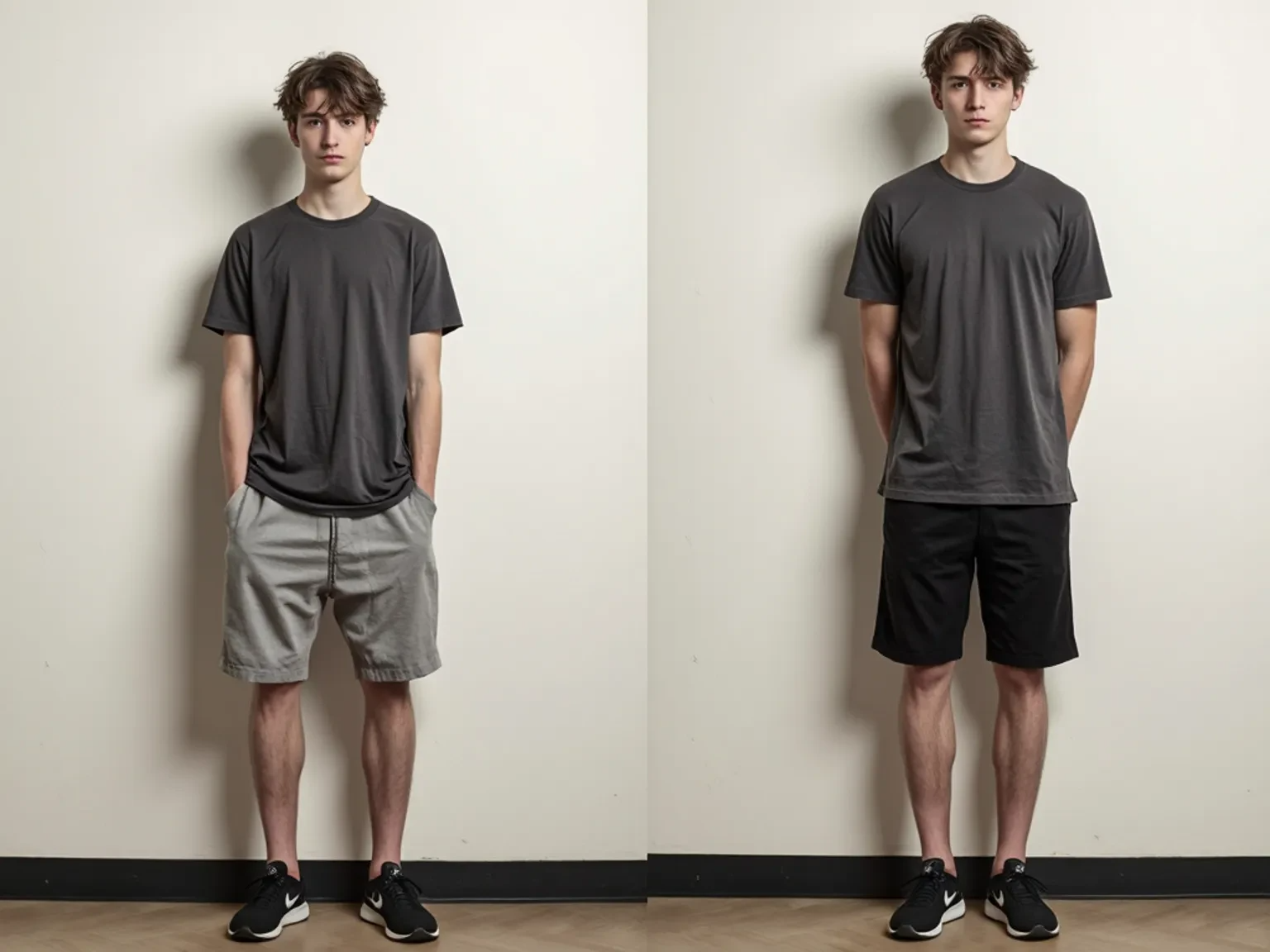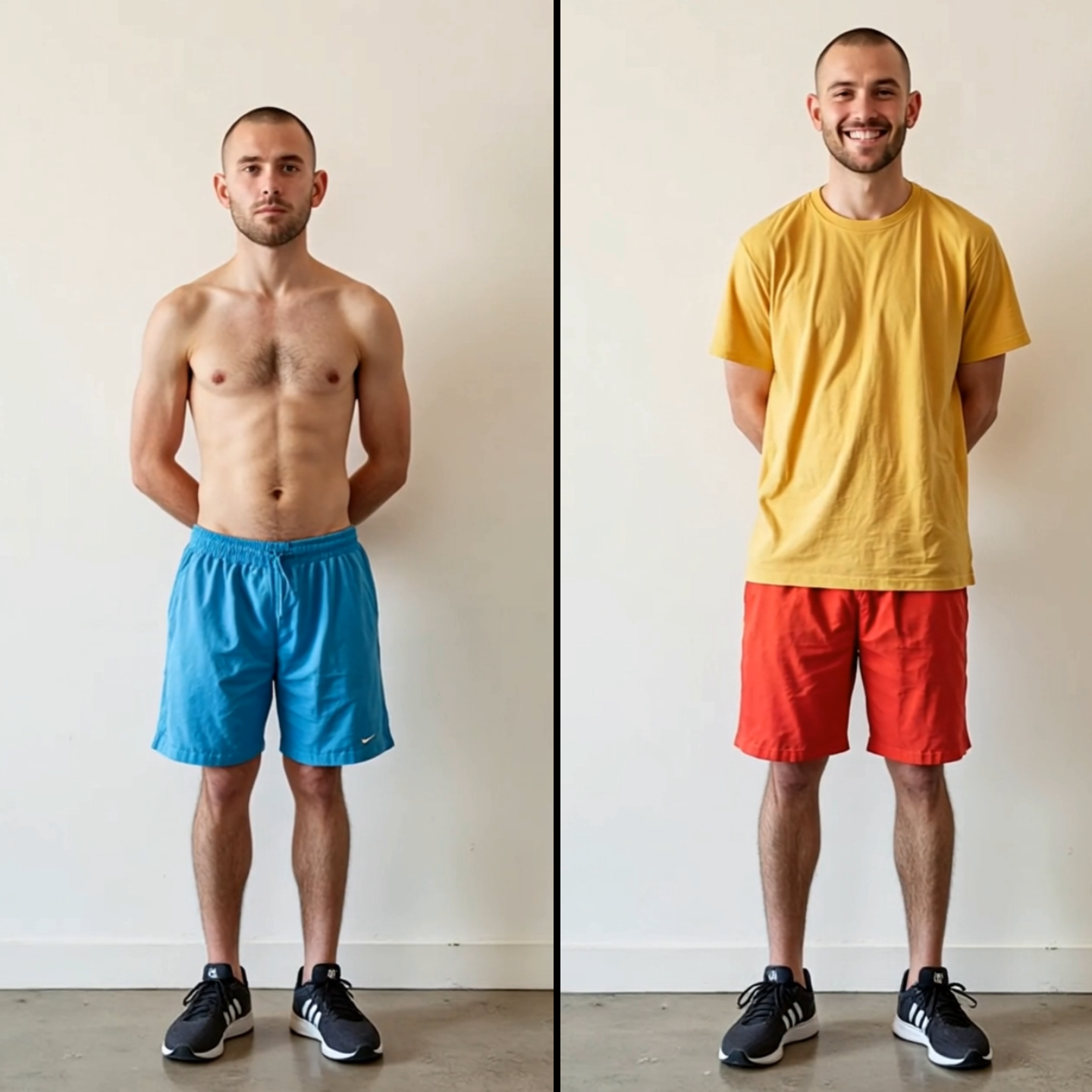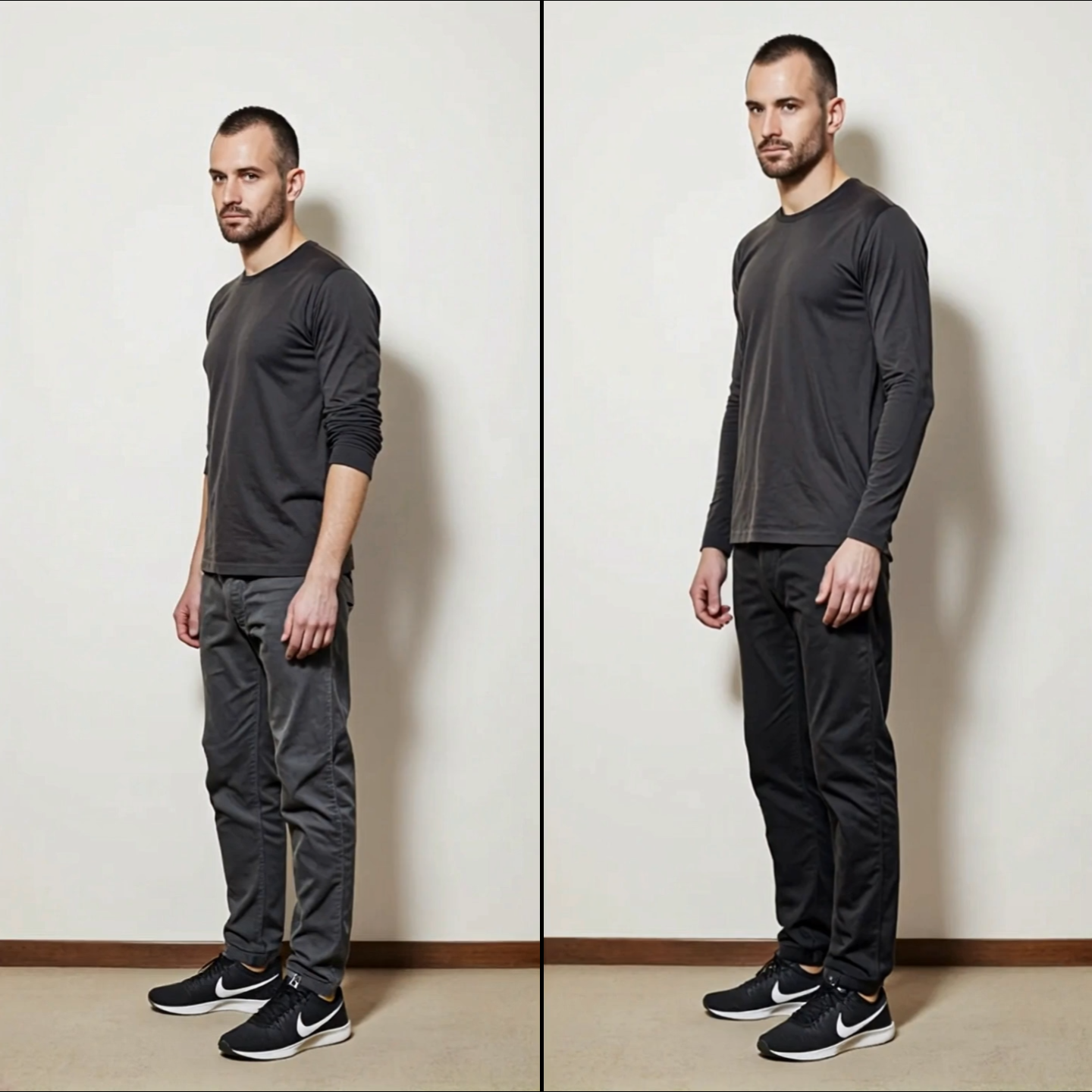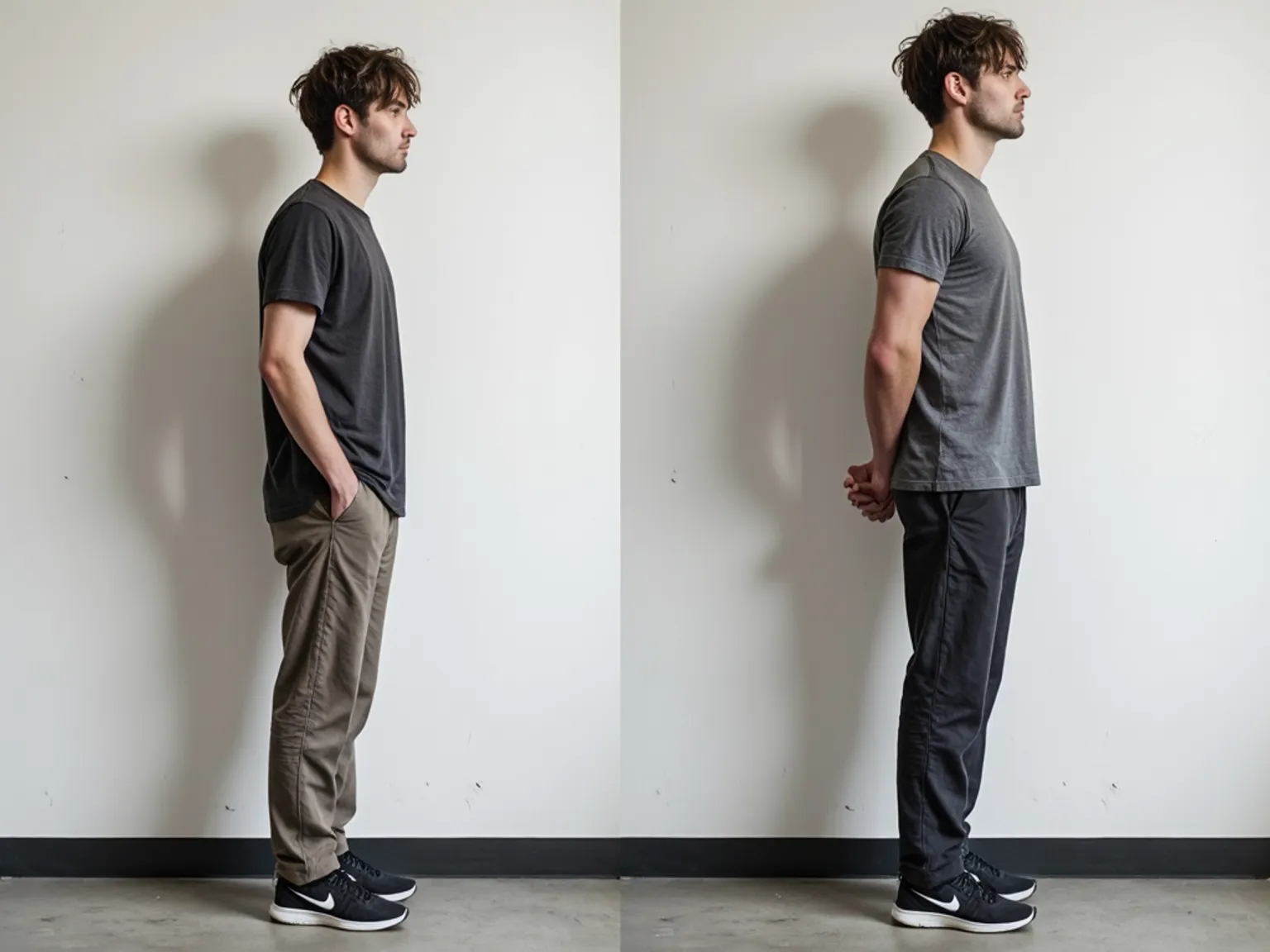Is It Too Late to Grow Taller After 18?
When I was younger, being 5’8” didn’t seem like a big deal. I never really thought about it much until high school. Then, one day, I noticed how every group photo felt like a reminder. There I was at the back, blending into the crowd, rarely noticed. People didn’t mean to, but they’d look past me, literally.
As the years went by, it wasn’t just about height anymore. By the time I was 18, it had started to seep into my confidence. Every date, every job interview, even every time I walked into a room, it felt like I had to prove myself twice as hard. The feeling of being invisible wasn’t just about physical height; it affected how I viewed myself and how others viewed me.
I’ll never forget a conversation I had with a coach when I was younger. “Can adults grow taller?” I asked him, desperate for an answer. His laugh stuck with me for years. “Your height is set in stone,” he said. “Once you're 18, that’s it.”
For years, I accepted that. I believed that myth. But eventually, something changed. I stopped accepting the idea that I had to live with it, and I started searching for a way to prove it wrong.
I was 21 at the time. I started looking into the science behind growth. I searched for studies, research, and even ancient methods that had been dismissed over time. What I found blew my mind.
You see, growth doesn’t stop at 18. The truth is, there’s more to it than you’ve been told.
The Science Behind Growth After 18
Most people believe that after 18, the growth plates in your bones close completely, and that's it. But here’s the reality: growth plates don’t always fully close at 18. In fact, they may continue to be active for a little longer. While growth slows significantly after puberty, there are still ways to influence your height, even as an adult.
In my research, I discovered that Human Growth Hormone (HGH) plays a critical role in the growth process. HGH is a naturally occurring hormone in our bodies, responsible for cell growth and regeneration. After 18, our bodies produce less of it, but we can stimulate HGH production through certain activities. More on that later.
Then, there’s the spine. Our spine is made up of 33 vertebrae, and each of them is separated by discs that act like cushions. Over time, these discs can become compressed, making us appear shorter. But did you know that spinal decompression could add inches to your height? By stretching the spine and decompressing those discs, you can regain some of that lost height. Each vertebra can expand by 1 to 2mm, which can mean up to 66mm of height gained, or about 2.5 inches.
The Role of Posture and
Spinal Decompression
Posture plays a huge role in how tall you appear. Slouching can make you look shorter than you are. But improving your posture through exercises like stretches, yoga, or even inversion therapy can help lengthen your spine and give the illusion of added height.
Decompressing the spine, specifically through techniques like inversion therapy, can also provide significant benefits. These methods gently stretch your spine and allow the discs to rehydrate, reducing compression and improving height. It’s like a reset for your spine, allowing you to stand taller.
The Power of Nutrition and Supplements
Another key factor in boosting your height potential is nutrition. Your body needs the right fuel to grow, and even as an adult, you can give it the tools it needs to reach its full height potential.
Certain foods and supplements can aid in boosting HGH production, including things like amino acids, vitamins, and minerals. Foods rich in protein, calcium, and vitamin D are crucial to support bone health. Supplements like L-arginine, L-glutamine, and even collagen can stimulate the body’s growth hormones and help promote better bone health.
The Power of Exercise
Exercise isn’t just about building muscle. It can actually help you grow taller by improving flexibility, stretching your muscles, and supporting overall bone health. Activities like swimming, cycling, and jumping exercises stimulate HGH production and promote better posture. But there are specific exercises designed to target the spine and promote growth, like hanging stretches or deep yoga poses.
I started incorporating these exercises into my daily routine at 21, and over time, I began noticing changes. It wasn’t immediate. It wasn’t magic. But every inch I gained felt like a victory.
At 25, I stand at 6’2”. More than the height itself, it’s the confidence that came with it. When I walk into a room now, people notice. Conversations start differently. The world treats you differently when you stand taller, literally and figuratively.
But I’m not the only one. Over 61,000 men worldwide have followed similar approaches to change their height and transform their lives.
Busting the Myth:
Height is Not Just About Genetics
The most significant myth I’ve uncovered is the idea that your height is purely determined by genetics. That’s not true. Sure, genetics play a role, but they’re not the final word. The body is adaptable, and with the right knowledge, consistency, and effort, you can change your height.
It’s not going to happen overnight. It’s not a shortcut. But it’s possible.

If you’ve ever looked in the mirror and wished for more, if you’ve ever felt the world overlook you or felt like you were always in the back, know that you’re not alone. I was there too. But I found a way forward. And so can you.
The idea that you’re stuck with the height you’re born with is a false belief. With the right tools, mindset, and consistency, growth after 18 is possible. Don’t let anyone tell you otherwise.

If you’re ready to change how you feel about yourself and your height, it all starts with knowledge and taking action. The body is capable of much more than you think. And with the right approach, you can grow taller, stand taller, and live taller.

This isn’t just my story. It’s a story that countless others have experienced too. And now, it’s your turn.



Is It Too Late to Grow Taller After 18?
When I was younger, being 5’8” didn’t seem like a big deal. I never really thought about it much until high school. Then, one day, I noticed how every group photo felt like a reminder. There I was at the back, blending into the crowd, rarely noticed. People didn’t mean to, but they’d look past me, literally.
As the years went by, it wasn’t just about height anymore. By the time I was 18, it had started to seep into my confidence. Every date, every job interview, even every time I walked into a room, it felt like I had to prove myself twice as hard. The feeling of being invisible wasn’t just about physical height; it affected how I viewed myself and how others viewed me.
I’ll never forget a conversation I had with a coach when I was younger. “Can adults grow taller?” I asked him, desperate for an answer. His laugh stuck with me for years. “Your height is set in stone,” he said. “Once you're 18, that’s it.”
For years, I accepted that. I believed that myth. But eventually, something changed. I stopped accepting the idea that I had to live with it, and I started searching for a way to prove it wrong.
I was 21 at the time. I started looking into the science behind growth. I searched for studies, research, and even ancient methods that had been dismissed over time. What I found blew my mind.
You see, growth doesn’t stop at 18. The truth is, there’s more to it than you’ve been told.
The Science Behind Growth After 18
Most people believe that after 18, the growth plates in your bones close completely, and that's it. But here’s the reality: growth plates don’t always fully close at 18. In fact, they may continue to be active for a little longer. While growth slows significantly after puberty, there are still ways to influence your height, even as an adult.
In my research, I discovered that Human Growth Hormone (HGH) plays a critical role in the growth process. HGH is a naturally occurring hormone in our bodies, responsible for cell growth and regeneration. After 18, our bodies produce less of it, but we can stimulate HGH production through certain activities. More on that later.
Then, there’s the spine. Our spine is made up of 33 vertebrae, and each of them is separated by discs that act like cushions. Over time, these discs can become compressed, making us appear shorter. But did you know that spinal decompression could add inches to your height? By stretching the spine and decompressing those discs, you can regain some of that lost height. Each vertebra can expand by 1 to 2mm, which can mean up to 66mm of height gained, or about 2.5 inches.
The Role of Posture and Spinal Decompression
Posture plays a huge role in how tall you appear. Slouching can make you look shorter than you are. But improving your posture through exercises like stretches, yoga, or even inversion therapy can help lengthen your spine and give the illusion of added height.
Decompressing the spine, specifically through techniques like inversion therapy, can also provide significant benefits. These methods gently stretch your spine and allow the discs to rehydrate, reducing compression and improving height. It’s like a reset for your spine, allowing you to stand taller.
The Power of Nutrition and Supplements
Another key factor in boosting your height potential is nutrition. Your body needs the right fuel to grow, and even as an adult, you can give it the tools it needs to reach its full height potential.
Certain foods and supplements can aid in boosting HGH production, including things like amino acids, vitamins, and minerals. Foods rich in protein, calcium, and vitamin D are crucial to support bone health. Supplements like L-arginine, L-glutamine, and even collagen can stimulate the body’s growth hormones and help promote better bone health.
The Power of Exercise
Exercise isn’t just about building muscle. It can actually help you grow taller by improving flexibility, stretching your muscles, and supporting overall bone health. Activities like swimming, cycling, and jumping exercises stimulate HGH production and promote better posture. But there are specific exercises designed to target the spine and promote growth, like hanging stretches or deep yoga poses.
I started incorporating these exercises into my daily routine at 21, and over time, I began noticing changes. It wasn’t immediate. It wasn’t magic. But every inch I gained felt like a victory.
At 25, I stand at 6’2”. More than the height itself, it’s the confidence that came with it. When I walk into a room now, people notice. Conversations start differently. The world treats you differently when you stand taller, literally and figuratively.
But I’m not the only one. Over 61,000 men worldwide have followed similar approaches to change their height and transform their lives.
Busting the Myth:
Height is Not Just About Genetics
The most significant myth I’ve uncovered is the idea that your height is purely determined by genetics. That’s not true. Sure, genetics play a role, but they’re not the final word. The body is adaptable, and with the right knowledge, consistency, and effort, you can change your height.
It’s not going to happen overnight. It’s not a shortcut. But it’s possible.

If you’ve ever looked in the mirror and wished for more, if you’ve ever felt the world overlook you or felt like you were always in the back, know that you’re not alone. I was there too. But I found a way forward. And so can you.
The idea that you’re stuck with the height you’re born with is a false belief. With the right tools, mindset, and consistency, growth after 18 is possible. Don’t let anyone tell you otherwise.

If you’re ready to change how you feel about yourself and your height, it all starts with knowledge and taking action. The body is capable of much more than you think. And with the right approach, you can grow taller, stand taller, and live taller.

This isn’t just my story. It’s a story that countless others have experienced too. And now, it’s your turn.



Is It Too Late to Grow Taller After 18?
When I was younger, being 5’8” didn’t seem like a big deal. I never really thought about it much until high school. Then, one day, I noticed how every group photo felt like a reminder. There I was at the back, blending into the crowd, rarely noticed. People didn’t mean to, but they’d look past me, literally.
As the years went by, it wasn’t just about height anymore. By the time I was 18, it had started to seep into my confidence. Every date, every job interview, even every time I walked into a room, it felt like I had to prove myself twice as hard. The feeling of being invisible wasn’t just about physical height; it affected how I viewed myself and how others viewed me.
I’ll never forget a conversation I had with a coach when I was younger. “Can adults grow taller?” I asked him, desperate for an answer. His laugh stuck with me for years. “Your height is set in stone,” he said. “Once you're 18, that’s it.”
For years, I accepted that. I believed that myth. But eventually, something changed. I stopped accepting the idea that I had to live with it, and I started searching for a way to prove it wrong.
I was 21 at the time. I started looking into the science behind growth. I searched for studies, research, and even ancient methods that had been dismissed over time. What I found blew my mind.
You see, growth doesn’t stop at 18. The truth is, there’s more to it than you’ve been told.
The Science Behind Growth After 18
Most people believe that after 18, the growth plates in your bones close completely, and that's it. But here’s the reality: growth plates don’t always fully close at 18. In fact, they may continue to be active for a little longer. While growth slows significantly after puberty, there are still ways to influence your height, even as an adult.
In my research, I discovered that Human Growth Hormone (HGH) plays a critical role in the growth process. HGH is a naturally occurring hormone in our bodies, responsible for cell growth and regeneration. After 18, our bodies produce less of it, but we can stimulate HGH production through certain activities. More on that later.
Then, there’s the spine. Our spine is made up of 33 vertebrae, and each of them is separated by discs that act like cushions. Over time, these discs can become compressed, making us appear shorter. But did you know that spinal decompression could add inches to your height? By stretching the spine and decompressing those discs, you can regain some of that lost height. Each vertebra can expand by 1 to 2mm, which can mean up to 66mm of height gained, or about 2.5 inches.
The Role of Posture and Spinal Decompression
Posture plays a huge role in how tall you appear. Slouching can make you look shorter than you are. But improving your posture through exercises like stretches, yoga, or even inversion therapy can help lengthen your spine and give the illusion of added height.
Decompressing the spine, specifically through techniques like inversion therapy, can also provide significant benefits. These methods gently stretch your spine and allow the discs to rehydrate, reducing compression and improving height. It’s like a reset for your spine, allowing you to stand taller.
The Power of Nutrition and Supplements
Another key factor in boosting your height potential is nutrition. Your body needs the right fuel to grow, and even as an adult, you can give it the tools it needs to reach its full height potential.
Certain foods and supplements can aid in boosting HGH production, including things like amino acids, vitamins, and minerals. Foods rich in protein, calcium, and vitamin D are crucial to support bone health. Supplements like L-arginine, L-glutamine, and even collagen can stimulate the body’s growth hormones and help promote better bone health.
The Power of Exercise
Exercise isn’t just about building muscle. It can actually help you grow taller by improving flexibility, stretching your muscles, and supporting overall bone health. Activities like swimming, cycling, and jumping exercises stimulate HGH production and promote better posture. But there are specific exercises designed to target the spine and promote growth, like hanging stretches or deep yoga poses.
I started incorporating these exercises into my daily routine at 21, and over time, I began noticing changes. It wasn’t immediate. It wasn’t magic. But every inch I gained felt like a victory.
At 25, I stand at 6’2”. More than the height itself, it’s the confidence that came with it. When I walk into a room now, people notice. Conversations start differently. The world treats you differently when you stand taller, literally and figuratively.
But I’m not the only one. Over 61,000 men worldwide have followed similar approaches to change their height and transform their lives.
Busting the Myth:
Height is Not Just About Genetics
The most significant myth I’ve uncovered is the idea that your height is purely determined by genetics. That’s not true. Sure, genetics play a role, but they’re not the final word. The body is adaptable, and with the right knowledge, consistency, and effort, you can change your height.
It’s not going to happen overnight. It’s not a shortcut. But it’s possible.

If you’ve ever looked in the mirror and wished for more, if you’ve ever felt the world overlook you or felt like you were always in the back, know that you’re not alone. I was there too. But I found a way forward. And so can you.
The idea that you’re stuck with the height you’re born with is a false belief. With the right tools, mindset, and consistency, growth after 18 is possible. Don’t let anyone tell you otherwise.

If you’re ready to change how you feel about yourself and your height, it all starts with knowledge and taking action. The body is capable of much more than you think. And with the right approach, you can grow taller, stand taller, and live taller.

This isn’t just my story. It’s a story that countless others have experienced too. And now, it’s your turn.